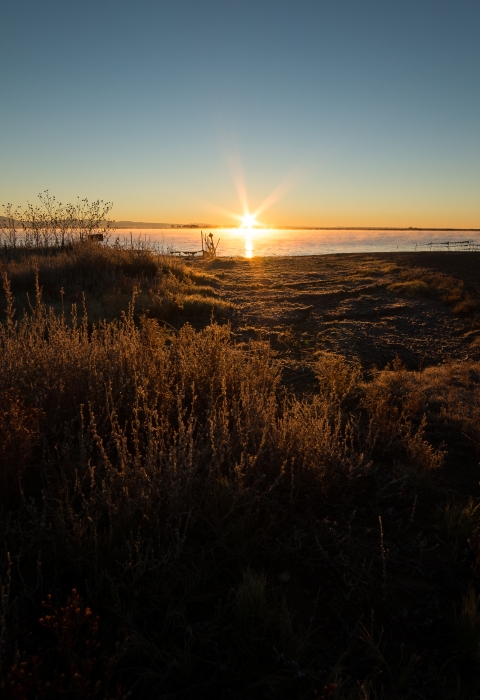Visit Us
The refuge is a great place for the whole family to enjoy a wide variety of activities. Observe and photograph wildlife along refuge roads. Stretch your legs on a hike.
Location and Contact Information
About Us
Seasons, weather, and water levels will influence what species of wildlife you will encounter on your visit. Over 278 species of bird have been recorded - 70 of which nest and raise their young here. Spring and fall are the best times to see unusual migrants. Exposed shorelines attract many shorebirds such as Wilson's phalarope, American avocet, yellowlegs, Long-billed dowitcher, and Spotted sandpiper. Several thousand ducks, geese, and cranes occupy the refuge in late fall and winter. In the summer, grasshopper, savanna, vesper, lark, and Cassin's sparrows are numerous. The colorful plumage and call of the Western meadowlarks can be enjoyed year-round. Raptors soaring overhead are plentiful. Watch for Bald and Golden eagles, ferruginous hawks, red-tailed hawks, Swainson's hawks, prairie and Peregrine falcons. Elk, Pronghorn, Mule deer, and White-tailed deer can often be seen browsing in the fields.
What We Do
Providing optimal habitat for wildlife on the refuge is a management priority. Refuge management practices such as browse or grain crop production, prescribed burning, invasive species invasive species
An invasive species is any plant or animal that has spread or been introduced into a new area where they are, or could, cause harm to the environment, economy, or human, animal, or plant health. Their unwelcome presence can destroy ecosystems and cost millions of dollars.
Learn more about invasive species control, and water manipulation enhance species diversity by ensuring a variety of habitat types.
